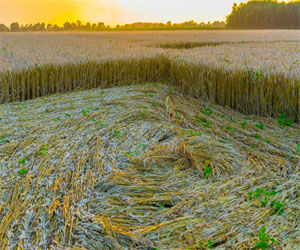


Understanding Our Feline Friends
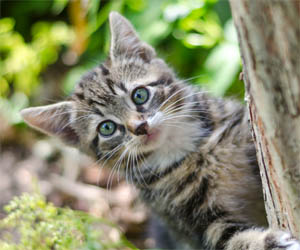
Cats, often revered for their enigmatic and graceful presence, are known for their independent nature. This characteristic has made them intriguing and beloved companions to many cat enthusiasts. Understanding the independent nature of cats is essential for anyone who wants to build a strong bond with these captivating creatures.
Self-Sufficiency At Its Finest
Cats are renowned for their self-sufficiency. Unlike some pets that require constant attention and care, cats are content to spend time alone. They are skilled hunters, and their instincts drive them to find food and take care of their basic needs without human intervention. This independence is deeply ingrained in their DNA.
Solo Explorers
Cats are natural explorers. They possess a sense of adventure that drives them to investigate their surroundings. Whether they're navigating the garden, chasing a shadow, or scaling a bookshelf, cats are always on a quest to satisfy their curiosity. Their solitary explorations are not a sign of detachment but rather a reflection of their innate inquisitiveness.
Selective Socializing
While cats may appear solitary, they are not necessarily antisocial. They are selective in their social interactions. Cats will form strong bonds with their human companions and other pets if given the opportunity. The independence of cats is often misunderstood as aloofness, but in reality, they enjoy companionship on their terms.
Maintaining Dignity
Cats are known for their dignified demeanor. They prefer to maintain their composure and rarely seek attention in the same way that dogs might. This does not mean they don't enjoy affection; it simply means they prefer it on their own terms. A cat that nuzzles your hand or curls up in your lap is, in fact, expressing a deep level of trust and affection.
The Joy Of Solitude
Cats often find joy in solitude. They appreciate their own company and value moments of peace and quiet. Providing your cat with a comfortable and safe space where they can retreat when they desire solitude is essential for their well-being.
Understanding And Respect
To build a strong bond with your cat, it's crucial to understand and respect their independent nature. Allow your cat to come to you for attention and affection. Provide stimulating toys and opportunities for exploration. Respect their boundaries and avoid forcing interactions.
The Rewards Of A Cat's Independence
The independent nature of cats is one of the qualities that make them such fascinating and cherished companions. Their ability to take care of themselves and their natural instincts add to the allure of having a feline friend. While they may not be as overtly expressive as dogs, the moments of connection and affection with a cat are all the more meaningful.
Cats' independent nature is a key part of what makes them unique and endearing. Embracing and respecting this quality while nurturing a loving and patient relationship with your feline friend will lead to a deeply rewarding and enriching bond that lasts a lifetime. Cats may be independent, but their hearts are open to those who are willing to understand and appreciate their enigmatic and graceful ways.
What Your Feline Friend Is Telling You
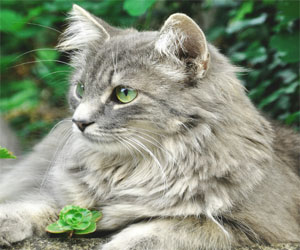 1. Straight Up And Quivering: When a cat's tail is held high and quivering at the tip, it's typically a sign of excitement and anticipation. Your cat may be thrilled to see you, play, or receive a treat.
1. Straight Up And Quivering: When a cat's tail is held high and quivering at the tip, it's typically a sign of excitement and anticipation. Your cat may be thrilled to see you, play, or receive a treat.
2. Puffed Up And Arched: A puffed-up tail, similar to a bottlebrush, is a classic sign of a frightened or threatened cat. It's an attempt to make themselves appear larger and more intimidating.
3. Straight Up And Fluffed: When a cat's tail is held high and fluffed, it indicates that they are feeling defensive or agitated. This often occurs when they encounter a perceived threat.
Unveiling The Power Of The Mind
 Hypnotherapy, the therapeutic use of hypnosis, has been particularly successful in helping individuals break free from addictions. The power of suggestion during hypnotherapy sessions can weaken the grip of cravings and reinforce the motivation to quit. For smokers, this might involve suggestions that cigarettes taste terrible, and the desire to smoke is replaced with a repulsion towards it. Such suggestions, when absorbed by the subconscious mind, can result in a profound shift in behavior.
Hypnotherapy, the therapeutic use of hypnosis, has been particularly successful in helping individuals break free from addictions. The power of suggestion during hypnotherapy sessions can weaken the grip of cravings and reinforce the motivation to quit. For smokers, this might involve suggestions that cigarettes taste terrible, and the desire to smoke is replaced with a repulsion towards it. Such suggestions, when absorbed by the subconscious mind, can result in a profound shift in behavior.
Weight loss is another area where hypnosis has demonstrated its effectiveness. By reprogramming attitudes toward food and promoting healthier choices, hypnotherapy can assist individuals in adopting sustainable dietary changes. This approach not only addresses the physical aspects of weight management but also targets the emotional and psychological factors that underlie unhealthy eating habits.
The Art Of Dream Interpretation
 Symbols In Dreams: Dreams often manifest as a collage of symbols, each with its unique significance. Common dream symbols may include animals, objects, people, and landscapes. Interpretation involves associating these symbols with their emotional and psychological connotations.
Symbols In Dreams: Dreams often manifest as a collage of symbols, each with its unique significance. Common dream symbols may include animals, objects, people, and landscapes. Interpretation involves associating these symbols with their emotional and psychological connotations.
Emotions In Dreams: Emotions play a crucial role in dream interpretation. The feelings experienced within a dream can reveal the dreamer's emotional state, unresolved conflicts, or desires. Analyzing the emotional content of dreams can be a key to self-awareness.
Freudian Interpretation: Sigmund Freud, the father of psychoanalysis, proposed that dreams are a window into the unconscious mind. He believed that dream symbols often represent hidden desires and unresolved conflicts. Freudian dream interpretation is centered on the idea of wish fulfillment.
Jungian Interpretation: Carl Jung, another influential psychologist, introduced the concept of archetypes into dream interpretation. Jung believed that dreams reflect universal themes and symbols. Jungian dream analysis involves exploring the collective unconscious and personal symbols.
Cultural And Personal Context: Dream interpretation is deeply influenced by cultural and personal context. What a symbol means to one person may vary significantly from its interpretation in another culture or for a different individual. Personal experiences, memories, and beliefs shape dream analysis.
Turning Trash Into A Sustainable Power Source
 The Waste-To-Electricity Process
The Waste-To-Electricity Process
Waste-To-Electricity (WTE) technology is the driving force behind the transformation of waste into clean electricity. It involves various processes such as incineration, gasification, and pyrolysis, which convert waste materials into heat, which is then used to produce electricity. The energy generated can be used to power homes, businesses, and industries, reducing the strain on conventional energy sources and decreasing our carbon footprint.
Diverse Waste Streams
WTE technology is versatile in its application, as it can process a wide range of waste materials. This includes municipal solid waste, biomass, agricultural residues, and even non-recyclable plastics. By harnessing the energy content of these waste streams, we not only address waste management concerns but also contribute to a sustainable energy mix.
Environmental Benefits
Clean electricity from waste offers a host of environmental advantages. One of the most significant benefits is the reduction of greenhouse gas emissions. WtE facilities are designed to burn waste at high temperatures, effectively minimizing the release of harmful pollutants into the atmosphere. This contributes to cleaner air and helps combat climate change.
Moreover, WTE technology significantly reduces the need for landfills, which are notorious for contaminating groundwater and emitting harmful gases.




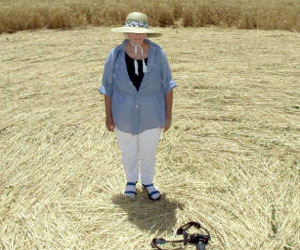

 Meditation And Mindfulness: Practicing meditation and mindfulness during the day can enhance your ability to remember and explore dreams. These practices promote awareness and encourage a deeper connection with your inner thoughts and feelings.
Meditation And Mindfulness: Practicing meditation and mindfulness during the day can enhance your ability to remember and explore dreams. These practices promote awareness and encourage a deeper connection with your inner thoughts and feelings.
Mnemonic Induction Of Lucid Dreams (MILD): MILD is a technique developed by Dr. Stephen LaBerge, a pioneer in lucid dream research. It involves setting a strong intention to remember your dreams and become lucid while repeating a specific mantra or affirmation as you fall asleep.
Wake-Back-To-Bed (WBTB): The WBTB technique involves waking up during the night and then going back to sleep with the intention of becoming lucid. This method takes advantage of the increased likelihood of entering a dream directly from the waking state.
Visualization: Before sleep, visualize your dream scenario or the type of dream you wish to have. This technique encourages your subconscious mind to construct dreams around your visualization.
Progressive Relaxation: Progressive muscle relaxation techniques help induce a calm and relaxed state before sleep, making it easier to enter the dream world with a clear and focused mind.
Paving The Way For A Greener Planet
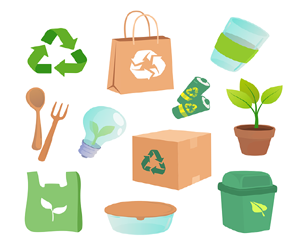 Clean And Renewable Energy Generation
Clean And Renewable Energy Generation
One of the most significant advantages of WtE technology is the production of clean and renewable energy. When waste is burned or otherwise processed in WTE facilities, it generates electricity and heat. This not only reduces the burden on conventional power sources but also contributes to a significant reduction in greenhouse gas emissions.
Mitigating Environmental Pollution
WTE technology plays a vital role in mitigating environmental pollution. By incinerating waste at high temperatures, harmful pollutants are filtered out, ensuring that emissions are well within permissible limits. This reduces the release of toxic substances into the atmosphere and lessens the strain on our environment. Moreover, the controlled conversion of waste reduces the risk of groundwater contamination that can occur in landfills.
Reducing Dependence On Fossil Fuels
As the world strives to reduce its dependence on fossil fuels, WTE technology offers a crucial alternative. By converting waste into energy, we decrease the need for non-renewable resources and cut carbon emissions. This is a significant step towards achieving a more sustainable energy mix and combating climate change.
Promoting A Sustainable Future
Waste-to-energy technology is not just about waste disposal; it's about creating a more sustainable future. It promotes a circular economy by reusing valuable resources from waste. This process conserves natural resources and helps ensure a sustainable supply of energy for generations to come.
Challenges And Considerations
While WTE technology offers numerous benefits, it is not without challenges. Critics point out concerns about air emissions, the need for efficient waste sorting, and opposition from some environmental groups.